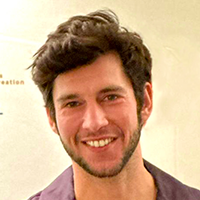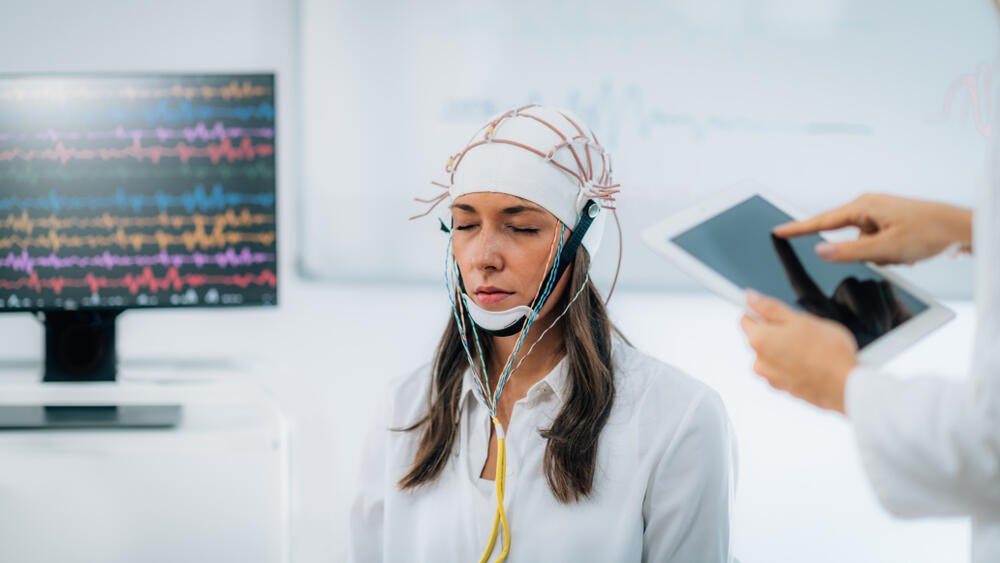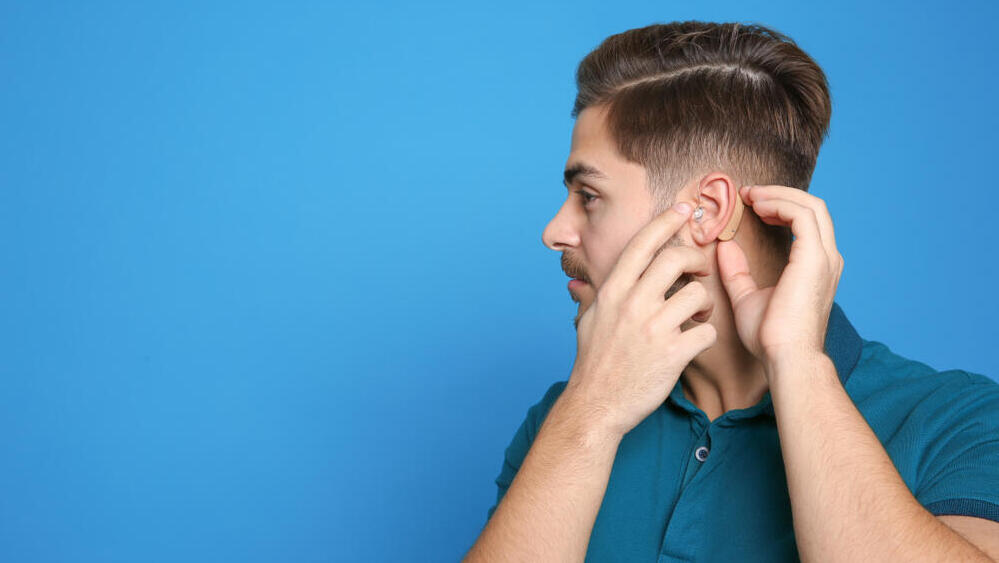Getting your Trinity Audio player ready...
A recent medical start-up project launched with cooperation between Israel’s Technion Institute and Cornell University in New York promises to make your senses sharper using electric shocks.
More stories:
The ongoing project aims to design a super patch that sends focused electrical stimulation to the brain, thus sharpening the senses and improving visual and auditory perception.
Behind the initiative are Dr. Charles Rodenkirch, 31, and Dr. Michael Jigo, 29, from the neurotechnology company Sharper Sense. Studies the two conducted in their lab showed that the electrical pulses delivered by the patch to the brain enhance its functioning in several areas, including spatial perception, vision, hearing and touch.
This should not be surprising. As early as the first century CE, doctors used electric fish to treat headaches, and studies from the past decade have shown that non-invasive brain stimulation using weak electrical currents improves its performance, shortens the learning time for complex cognitive tasks, and can even assist in treating neurologic medical conditions.
Your brain on electricity
Rodenkirch conducted research at Columbia University, to discover what in the electrocution process helps heighten the senses. "Athletes call it being 'in the zone',” he says. "This state isn’t necessarily an influence of endorphins, as many tend to think.”
“It's the ability to be alert even when physically tired, and science wants to understand the mechanism behind it. After all, the eyes and ears don't change, so something in the brain causes the senses to become duller over time," he adds.
Rodenkirch’s team performed simulations on mice, focusing on a specific part of the brain that requires stimulation: the thalamus, which serves as an information relay station for all senses except smell.
"It's the part that receives all the audio, video and tactile sensations of our lives," he says. "Everything passes through it. It’s the gateway to reality and perception. The moment we simulate it, it affects everything."
"Simulation" is essentially a euphonym for electrocution. "It's a controlled dose of electricity," Jigo explains. "Basically, we use a language the brain understands. Instead of using drugs, which disrupt the nerve process, we use the brain's natural language.”
“We discovered a method that allows us to perform the process non-invasively: there's an area in the neck where the skin is thin enough to reach the nerves directly," he adds.
Improved senses
In the future, all the required wiring is expected to be covered by a patch pressed into the neck. In the meantime, for the experiment, researchers use equipment that delivers a weak current of up to 2 milliamperes through my nerves for several seconds.
They then present me with a row of lines with minor differences - sometimes out of the simulation and sometimes during it - and I’m supposed to identify which line is thicker and when the difference between them blurs.
Afterward, they play a recording of words with background noise that gradually increases until the word is completely swallowed in the noise. Finally, they show me several pictures that were supposed to become sharper during the simulation.
Usually, the experiment goes smoothly, but it seems that the American equipment isn’t ready for launch just yet, it keeps falling, tickling, electrifying, and probably affecting the test’s results.
Nonetheless, during the simulation, I could definitely see finer details that I haven't seen before, like tiny white hairs on a blackberry or small pores on the edge of a match. For people with visual and auditory conditions, this can be significant.
According to the study, whose results were published in the journal Nature, this really works: thirsty mice learned to make the correct choice with the help of brain simulation. "It was a breakthrough that made us understand the magnitude of the invention," says Rodenkirch.
A gamechanger for neurologic conditions
According to him, the team immediately thought about the use of simulation by athletes since the neural interface improves perception, which could lead to improved awareness, and shorter reaction times in training and competitions, so they started developing the product with athletes in mind.
In the product’s next stage, they realized their invention could benefit more populations. "We realized we could help elderly people with hearing loss to understand speech in noisy environments," the researchers say.
"We asked elderly people what their weakest sense was, and surprisingly, most of them said it was their hearing. It turns out that when you have vision problems, glasses can solve them, but there are many issues with hearing aids: they may help prevent hearing damage, but can’t help the brain’s natural aging. We complement the treatment."
The solution, for which the two researchers have registered a patent, is a patch that adheres to the neck and sends electrical pulses. "It works as long as it's on," Rodenkirch emphasizes. "The effect stops the moment you remove it."
Experiments conducted over the past year have shown a 20%-30% improvement in seeing details, hearing and vision among healthy adolescents. Recently, the team began testing the product on the elderly, who already report being able to understand one more word in each sentence they hear.
The researchers have already raised about $700,000 for the project's development, and their next goal is to obtain FDA approval and launch the patch in the American market, and then in Israel.
"We didn't come to the Jacobs Technion-Cornell Institute hub, which is a joint initiative of the Technion in Israel and Cornell University in the U.S., for nothing," they say. "Israel is a leader in this field, and we receive mentoring, engineers, entrepreneurs and advisors from Israel. It's amazing to be part of this community."







